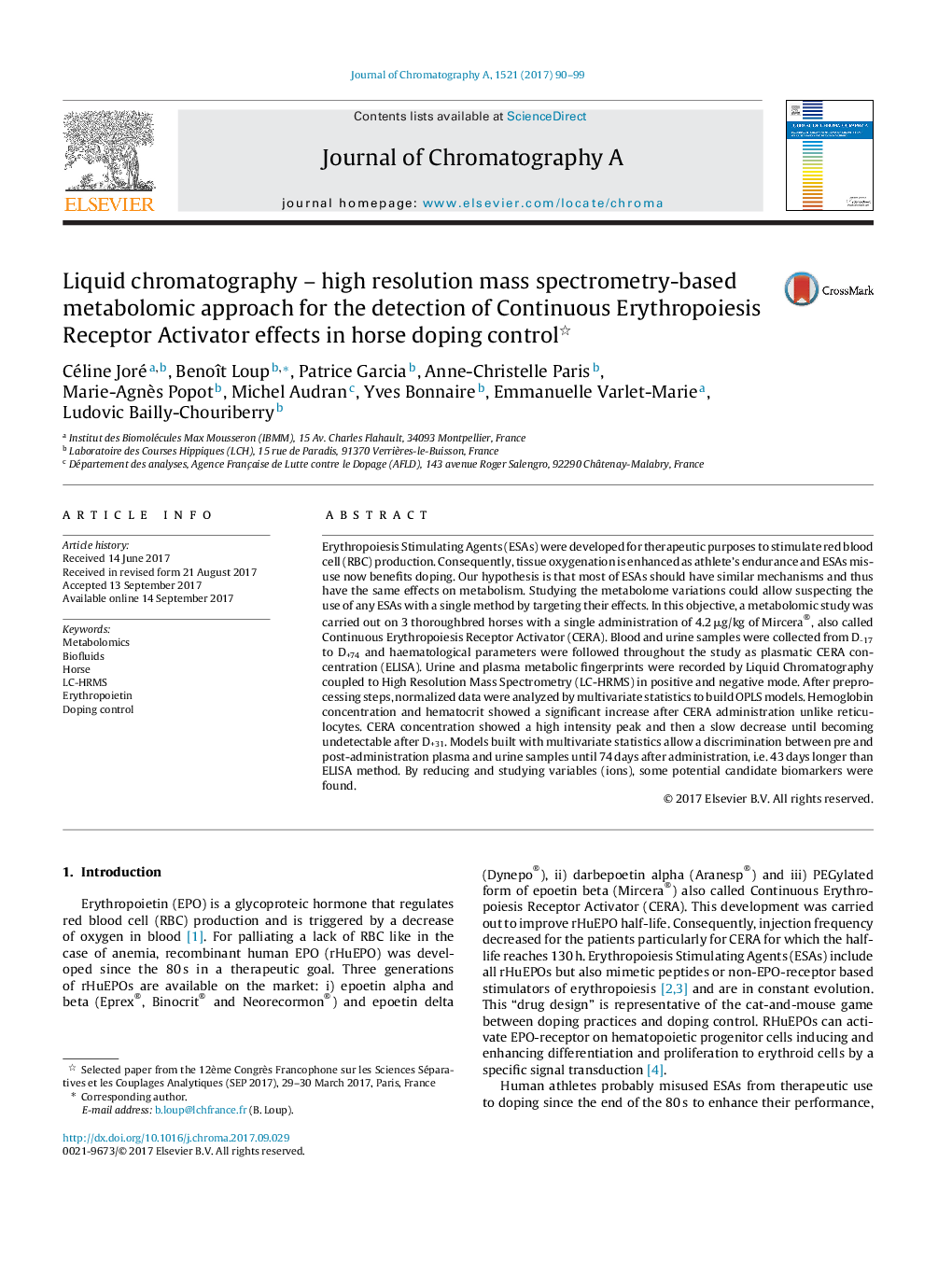| Article ID | Journal | Published Year | Pages | File Type |
|---|---|---|---|---|
| 5134836 | Journal of Chromatography A | 2017 | 10 Pages |
â¢A metabolomic study on a single rHuEPO administration on 3 horses is presented.â¢Plasma and urine fingerprints were recorded by LC-HRMS.â¢Equine hemoglobin and hematocrit increased after rHuEPO administration.â¢Multivariate predictive models discriminating treated from control.â¢Increase of rHuEPO administration detection window.
Erythropoiesis Stimulating Agents (ESAs) were developed for therapeutic purposes to stimulate red blood cell (RBC) production. Consequently, tissue oxygenation is enhanced as athlete's endurance and ESAs misuse now benefits doping. Our hypothesis is that most of ESAs should have similar mechanisms and thus have the same effects on metabolism. Studying the metabolome variations could allow suspecting the use of any ESAs with a single method by targeting their effects. In this objective, a metabolomic study was carried out on 3 thoroughbred horses with a single administration of 4.2 μg/kg of Mircera®, also called Continuous Erythropoiesis Receptor Activator (CERA). Blood and urine samples were collected from D-17 to D+74 and haematological parameters were followed throughout the study as plasmatic CERA concentration (ELISA). Urine and plasma metabolic fingerprints were recorded by Liquid Chromatography coupled to High Resolution Mass Spectrometry (LC-HRMS) in positive and negative mode. After preprocessing steps, normalized data were analyzed by multivariate statistics to build OPLS models. Hemoglobin concentration and hematocrit showed a significant increase after CERA administration unlike reticulocytes. CERA concentration showed a high intensity peak and then a slow decrease until becoming undetectable after D+31. Models built with multivariate statistics allow a discrimination between pre and post-administration plasma and urine samples until 74 days after administration, i.e. 43 days longer than ELISA method. By reducing and studying variables (ions), some potential candidate biomarkers were found.
